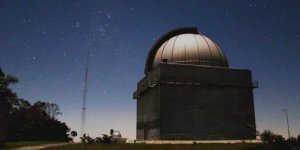| News / Space News |
Astronomers discover smallest known star
Astronomers at the University of Cambridge in England announced the discovery of a dwarf star, known as EBLM J0555-57Ab, which is slightly bigger than Saturn and smaller than Jupiter. It was found using data from an array of automated telescopes called the Wide Angle Search for Planets (WASP).
The star belongs to the Milky Way galaxy and is approximately 600 light years away from Earth. Its mean radius is about 80 percent the size of the largest planet in the Solar System, Jupiter, but despite its small size it is very dense. Its mass is almost 85±4 times the gas giant, the study said.
The star's surface gravitational pull is about eleven times stronger than the Sun's — 300 times the strength by which the Earth attracts matter. It is part of a binary star system, meaning it moves around the galaxy with another star, both orbiting around the same central point.
However, it stays so close to its companion star, that it takes about 7.8 days to orbit around the pair's shared centre. The distance between the two stars is less than between Mercury and the Sun, and about eight percent of an astronomical unit, in stark contrast to the 100–1000 astronomical units that typically separates two stars in such a system.
This discovery reveals how small stars can be. Had this star formed with only a slightly lower mass, the fusion reaction of hydrogen in its core could not be sustained, and the star would instead have transformed into a brown dwarf.
A brown dwarf converts hydrogen to deuterium, a hydrogen isotope, rather than helium, which is the usual result of such a process from most stars including the Sun.
The tiny star's temperature is lesser than most known gas giant exoplanets. That star likely represents the smallest natural fusion reactor that we know of. (Wikinews)
YOU MAY ALSO LIKE




